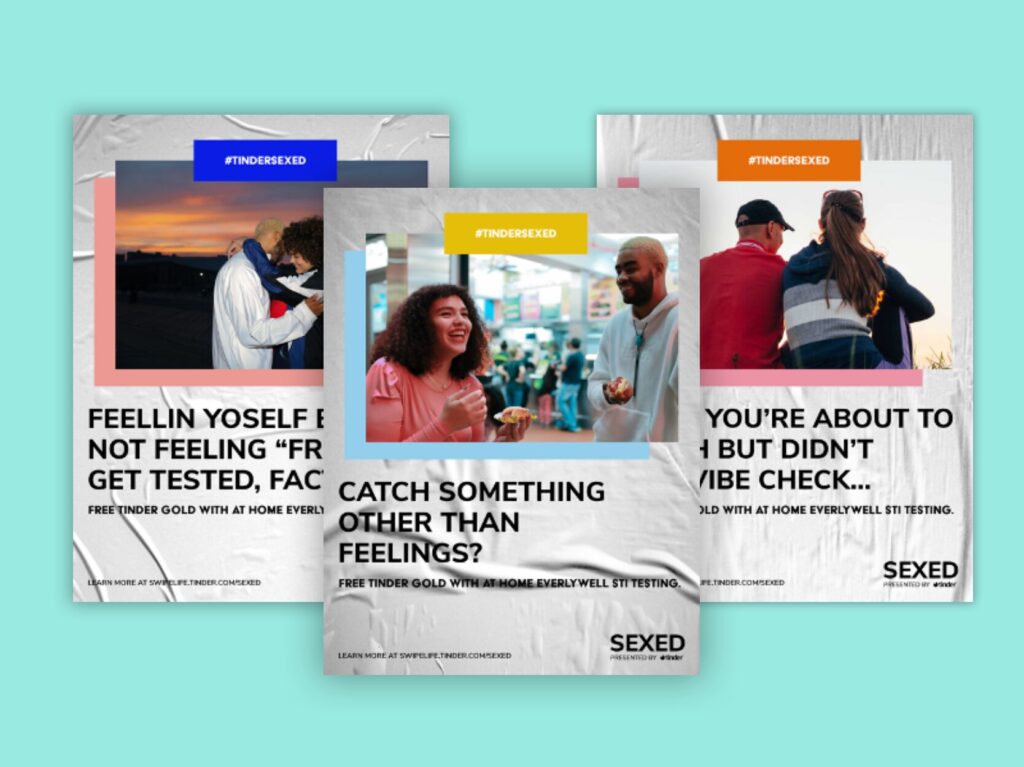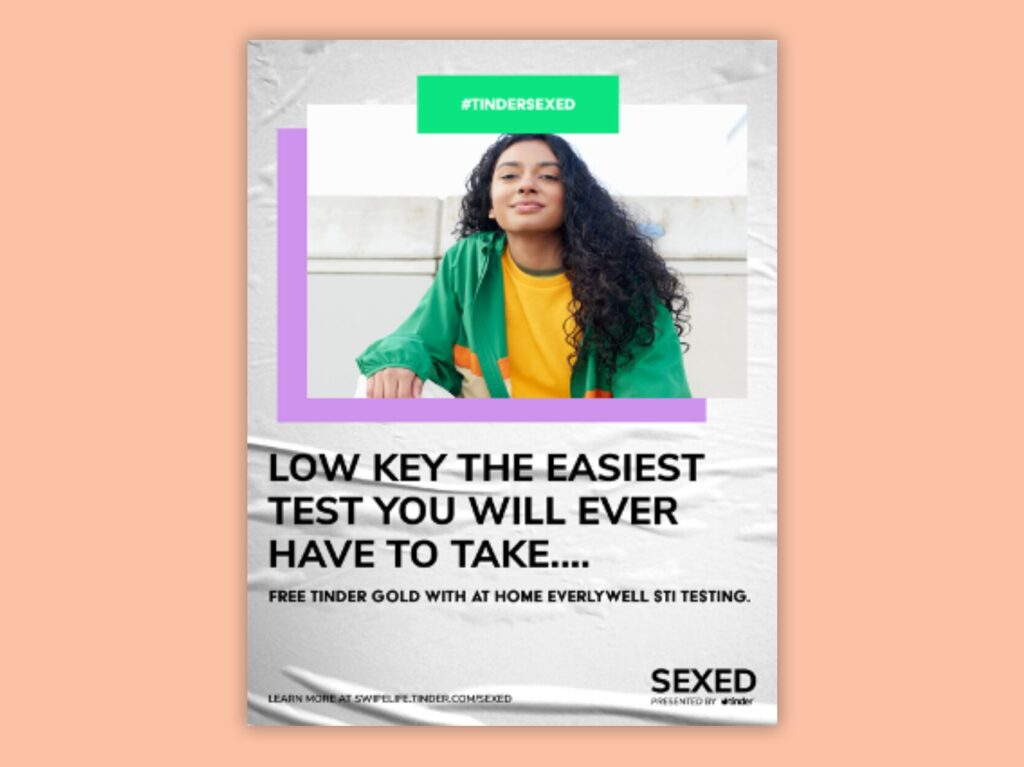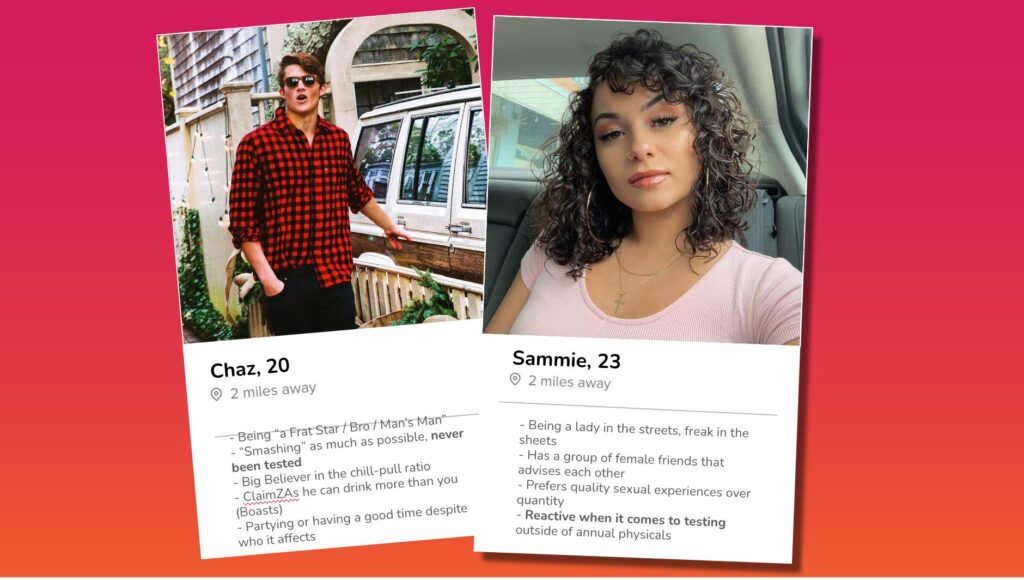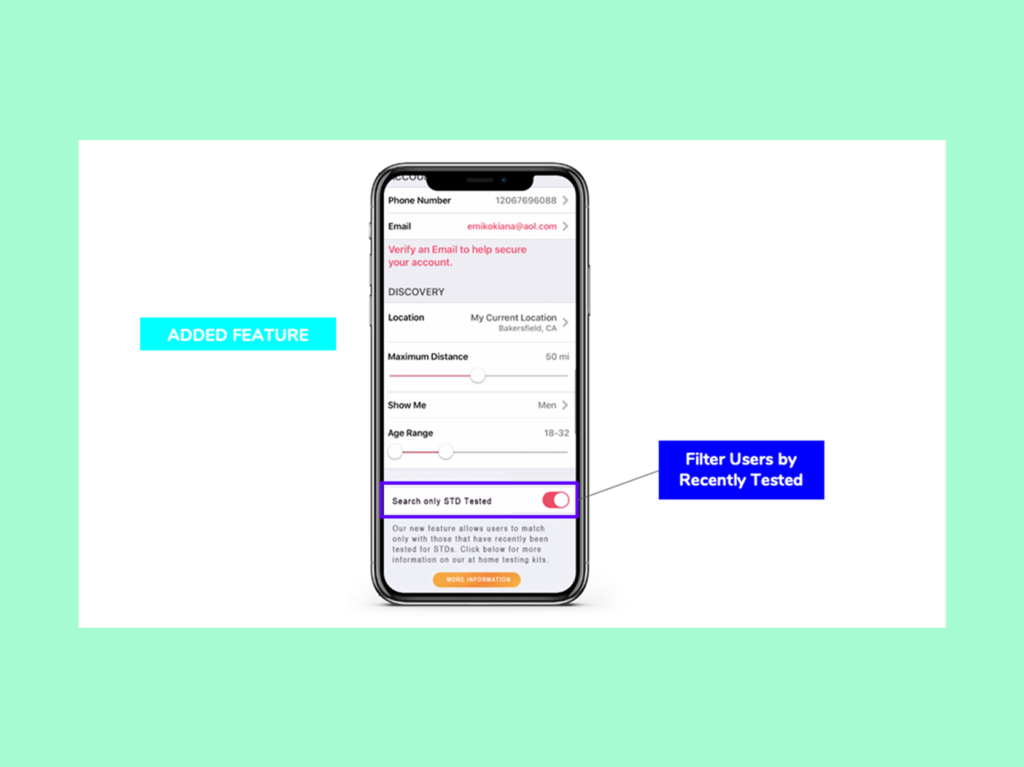- Date: 27 April 2024
- Categories: UX/UI Design
Overview
Tinder enhances the single experience, fostering connections between individuals who might not cross paths otherwise, all while celebrating the unique journey of being single. However, the current narrative surrounding public health has shifted away from connection, associating platforms like Tinder with what some label as “digital bathhouses.” Shockingly, around 20 million new cases of sexually transmitted infections (STIs) arise annually, with nearly half occurring among young adults aged 15 to 24. The surge in STI rates is attributed to the utilization of dating apps and websites for arranging casual, often anonymous sexual encounters.
This initiative aims to develop a fictional product campaign centered around a feature designed to integrate essential sexual health information within the Tinder ecosystem, highlighting the potential to promote awareness and responsible behavior.

The Opportunity
Tinder’s lack of addressing sexual health in their entire dating ecosystem created an opportunity to improve the product. Online dating is here to stay but we can at least make it just a little bit safer.
My team sought to delve into the stigma surrounding sex and pondered, “How can we empower sexually active individuals to inquire about their partner’s sexual health status?” Keeping this goal in focus, we pinpointed the following challenges:
- There is still a stigma about talking with your partner about sex and their status.
- People either ignore or are uncomfortable with talking about their situation with people they are having or plan to have sex with
- Most platforms are antiquated (either paper or word of mouth /trust) and don’t show validity.
- Testing requires you to go to your doctor.
- There are disparate dating apps.
Target Audience
- There are ~50M Tinder users with ~5.9M Tinder Gold Subscribers ($1.2B in annual revenue)
- 30M Matches per day with a peak period of 6 PM-10 PM (Best time to get a tinder match is 9 PM
- Women swipe right on men less than men swipe right on women (14% compared to 46%
- 79% of Tinder users are Millennials
- ~60% are outside of the US
- No sex education materials anywhere (the brand tends to dismiss that they are a hookup app)
- No way in the ecosystem for users to see if individuals have been tested recently
Goals
In addition, to increasing MAU’s of tinder Gold subscriptions, we felt it was essential to satisfy the following for our target demographic:
- Motivate sexually active individuals to care about their sexual health status to remove the stigma of asking their partner
- Establish Tinder as a brand that cares about reducing STD transmission rates
- Improve the feature set to let users search by STD Status.


Personas
We identified heterosexual college students between the ages of 18-23 as our target audience within the Tinder ecosystem as we felt these individuals were more susceptible to STD’s and had less blanket education than of their LGBTQ counterparts. Because of this, we decided that partnering with a company like Everly Well (Revenue Marketing Partner) along with universities could create the best synergistic relationship.
- Chaz is a bit self-centered while being vocal and outlandish without concern to those around them. He is most caring about partying or having a good time despite who it affects or bothers and is highly motivated by sexual desire, drinking, and being vocal about what he is doing.
- Sammie is the new-aged version of Carrie Bradshaw, who understands her worth, but is open to exploring her sexuality. She is headstrong, confident, and understands that she holds power and authority over the men she dates. Getting into her bed is not an easy feat, but well worth it.

Strategy
Our strategy was to create a year-long campaign tied to the academic school year for the LA metro area which then could be rolled out either nationally or globally and would include the following:
- STI testing with the campaign partner Everlywell, an at-home STD/STI kit with Telehealth prescription and consultations for positive tests.
- Experiential marketing using participatory, hands-on, and tangible branding material, the business can show its customers not just what the company offers like dating hosted chat rooms, dating events, and fireside chats with top social influencers around the stigma of sexual health
- A series of text message-recorded videos of horror stories that would be used as display ads, social content, and commercials
- Updated resources including in-app and web, that make it easy to get answers or learn about sexual health
- Free month of Tinder gold for regular STI testing
We hypothesize the following:
- ~1M College Students in the LA Metro Area
- ~30% we expect to attract with this campaign
- ~16% will activate / test (those who utilize Everlywell for tinder gold conversion)
- ~18% retention of users who continue use their Tinder gold
- ~12% of users will generate revenue and convert to paid users
- ~6% will refer other students to the app services via the campaign
The Partnership
Partnering with everlywell would allow us to send test kits to users who require their match get tested before they meet up. At home testing at your fingertip.


Takeaway
In the online dating sphere, it’s crucial for companies like Tinder to prioritize creating the simplest and most effective methods for ensuring community safety and improving their reputation.